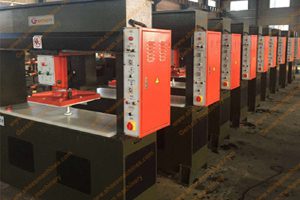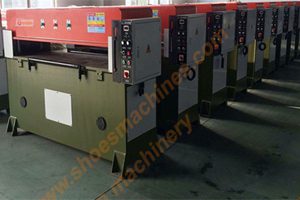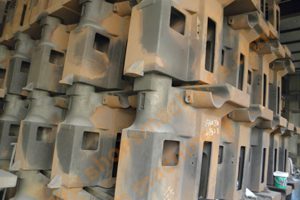Engineering plastic are a group of plastic materials that have better mechanical and/or thermal properties.
There have several engineering plastic types:
ABS: Acrylonitrile butadiene styrene (chemical formula (C8H8)x· (C4H6)y·(C3H3N)z) is a common thermoplastic. Its glass transition temperature is approximately 105 °C (221 °F). ABS is amorphous and therefore has no true melting point.
PC:Polycarbonates received their name because they are polymers containing carbonate groups.Polycarbonate is a durable material. Although it has high impact-resistance, it has low scratch-resistance and so a hard coating is applied to polycarbonate eyewear lenses and polycarbonate exterior automotive components.
PA: A polyamide is a polymer containing monomers of amides joined by peptide bonds. They can occur both naturally and artificially, examples being proteins, such as wool and silk, and can be made artificially through step-growth polymerization or solid-phase synthesis, examples being nylons, aramids, and sodium poly(aspartate). Polyamides are commonly used in textiles, automotives, carpet and sportswear due to their extreme durability and strength.
PBT: Polybutylene terephthalate (PBT) is a thermoplastic engineering polymer, that is used as an insulator in the electrical and electronics industries. It is a thermoplastic (semi-)crystalline polymer, and a type of polyester. PBT is resistant to solvents, shrinks very little during forming, is mechanically strong, heat-resistant up to 150 °C (or 200 °C with glass-fibre reinforcement) and can be treated with flame retardants to make it noncombustible.
PET, PETE:Polyethylene terephthalate (sometimes written poly(ethylene terephthalate)), commonly abbreviated PET, PETE, or the obsolete PETP or PET-P, is a thermoplastic polymer resin of the polyester family and is used in synthetic fibers; beverage, food and other liquid containers; thermoforming applications; and engineering resins often in combination with glass fiber. The term polyethylene terephthalate is a source of confusion because this substance, PET, does not contain polyethylene. Thus, the alternate form, poly(ethylene terephthalate), is often used in scholarly journals for the sake of accuracy and clarity.
PTFE: Polytetrafluoroethylene (PTFE) is a synthetic fluoropolymer of tetrafluoroethylene that has numerous applications. The best known brand name of PTFE is Teflon by DuPont Co.PTFE is a thermoplastic polymer, which is a white solid at room temperature, with a density of about 2200 kg/m3. According to DuPont, its melting point is 600 K (327 °C; 620 °F)
PEEK: Polyether ether ketone (PEEK) is a colourless organic polymer thermoplastic in the polyaryletherketone (PAEK) family .PEEK is a semicrystalline thermoplastic with excellent mechanical and chemical resistance properties that are retained to high temperatures. The Young’s modulus is 3.6 GPa and its tensile strength 90 to 100 MPa.[4] PEEK has a glass transition temperature at around 143 °C (289 °F) and melts around 343 °C (662 °F). The thermal conductivity increases nearly linearly versus temperature between room temperature and solidus temperature.
PPS:Polyphenylene sulfide (PPS) is an organic polymer consisting of aromatic rings linked with sulfides. Synthetic fiber and textiles derived from this polymer are known to resist chemical and thermal attack. PPS is used to make filter fabric for coal boilers, papermaking felts, electrical insulation, specialty membranes, gaskets, and packings. PPS is the precursor to a conducting polymer of the semi-flexible rod polymer family. The PPS, which is otherwise insulating, can be converted to the semiconducting form by oxidation or use of dopants.
POM: Polyoxymethylene (POM), also known as acetal,[1] polyacetal and polyformaldehyde, is an engineering thermoplastic used in precision parts requiring high stiffness, low friction and excellent dimensional stability.POM is characterized by its high strength, hardness and rigidity to ~40 °C. POM is intrinsically opaque white, due to its high crystalline composition, but it is available in all colors. POM has a density of ρ = 1.410-1.420 g/cm3.
PPO: Poly(p-phenylene oxide) (PPO) or poly(p-phenylene ether) (PPE) is a high-temperature thermoplastic. It is rarely used in its pure form due to difficulties in processing. It is mainly used as blend with polystyrene, high impact styrene-butadiene copolymer or polyamide.
Nylon 6: Nylon 6 or polycaprolactam is a polymer developed by Paul Schlack at IG Farben to reproduce the properties of nylon 6,6 without violating the patent on its production. Nylon 6 finds application in a broad range of products requiring materials of high strength. It is widely used for gears, fittings, and bearings, in automoti industry for under-the-hood parts, and as a material for power tools housings.










